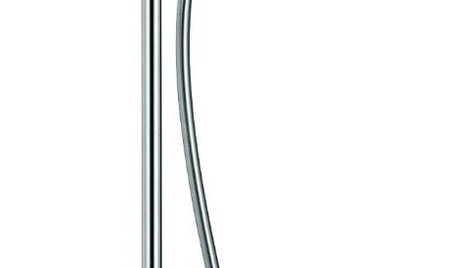Repairing bathroom floor... again
mgedid
10 years ago
Related Stories

BATHROOM TILEQuick Fix: Repair Cracked Bathroom Grout
Banish an eyesore and safeguard your bathroom from water damage in 30 minutes or less with this DIY repair
Full Story
DECORATING GUIDESHouzz Tour: Happy Days Are Here Again in a Miami Apartment
The colors of Biscayne Bay, an owner’s fond memories and the groovy spirit of the 1970s inspire a bright redesign
Full Story
HOUZZ TOURSHouzz Tour: An 1850s Ancestral Home in Texas Rises Again
See how exacting research and meticulous renovations gave a retired couple their dream home on a regained family plantation
Full Story
REMODELING GUIDES11 Reasons to Love Wall-to-Wall Carpeting Again
Is it time to kick the hard stuff? Your feet, wallet and downstairs neighbors may be nodding
Full Story
BUDGET DECORATING12 Ways to Make Your Home Feel New Again
Treat your furniture, walls, floors and countertops to some TLC, to give them a just-bought look for a fraction of the cost
Full Story
BATHROOM DESIGNGuest Picks: Everything Old (Bath) is New Again
Vintage-inspired fixtures and accessories give a new bathroom polish and a nod to the past
Full Story0

TRADITIONAL HOMESMy Houzz: A Centuries-Old French Estate Charms Again
Time and local artisans help a couple realize an idyllic French country retreat — and you can rent it
Full Story
CONTEMPORARY HOMESHouzz Tour: A Wine Country Home, Reinvented Once Again
Ten years after its first renovation, a 4-bedroom Northern California house gets another redo — this time with timelessness in mind
Full Story
PRODUCT PICKSGuest Picks: Everything Old-World Is New Again
Give even a new build a romantic history with lighting fixtures, hardware and drapes that recall the Old Country
Full Story
VACATION HOMESHouzz Tour: Glory Days Again for Converted Scottish Lighthouse
A dilapidated lighthouse on the shores of Loch Ness has been beautifully renovated to become 2 stylish vacation rentals
Full StoryMore Discussions







raehelen
mgedidOriginal Author
Related Professionals
Clarksburg Kitchen & Bathroom Designers · Roselle Kitchen & Bathroom Designers · Verona Kitchen & Bathroom Designers · Vineyard Kitchen & Bathroom Designers · Gilbert Kitchen & Bathroom Remodelers · League City Kitchen & Bathroom Remodelers · Mooresville Kitchen & Bathroom Remodelers · Spokane Kitchen & Bathroom Remodelers · Chantilly Glass & Shower Door Dealers · Lynnwood Glass & Shower Door Dealers · Farmers Branch Cabinets & Cabinetry · Manville Cabinets & Cabinetry · Ferndale Window Treatments · Walnut Creek Window Treatments · Westfield Window Treatmentsraehelen
kirkhall
mgedidOriginal Author
StoneTech
MongoCT
mgedidOriginal Author
MongoCT
mgedidOriginal Author
raehelen
MongoCT
mgedidOriginal Author
Bunny